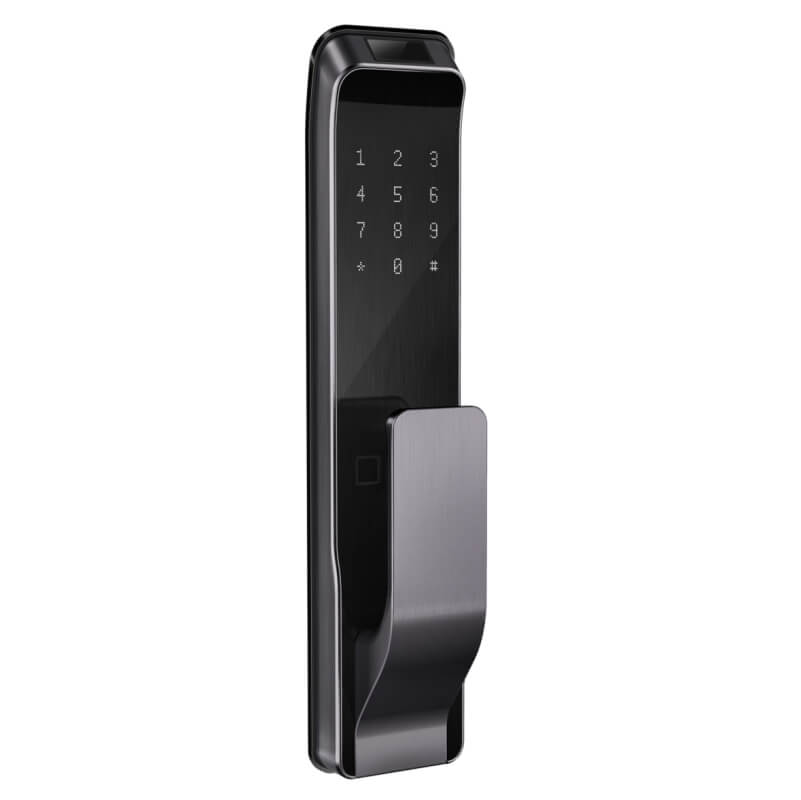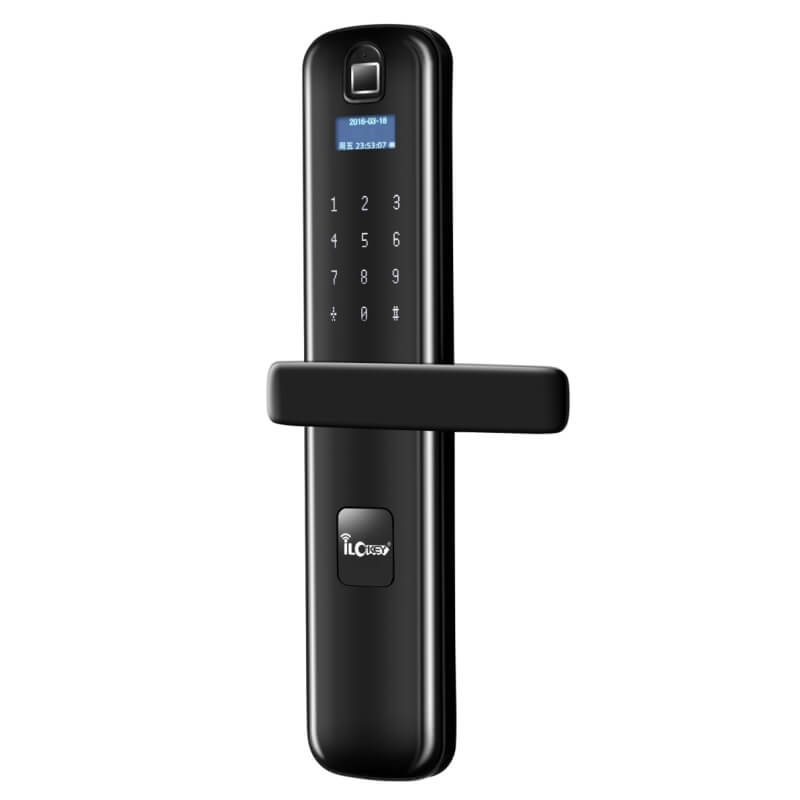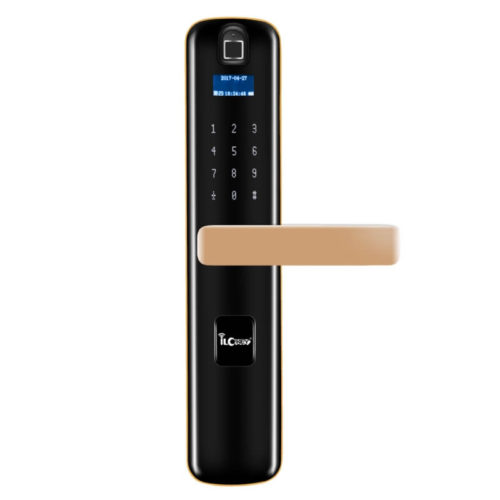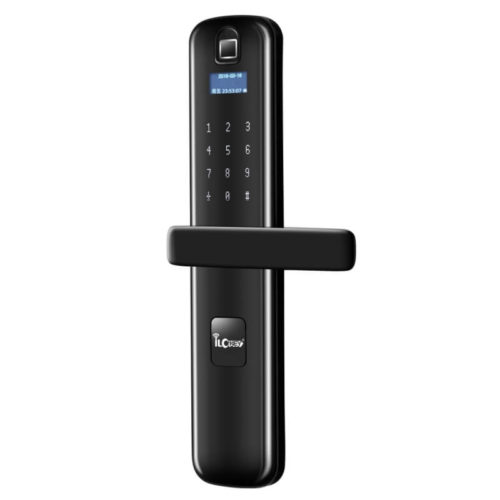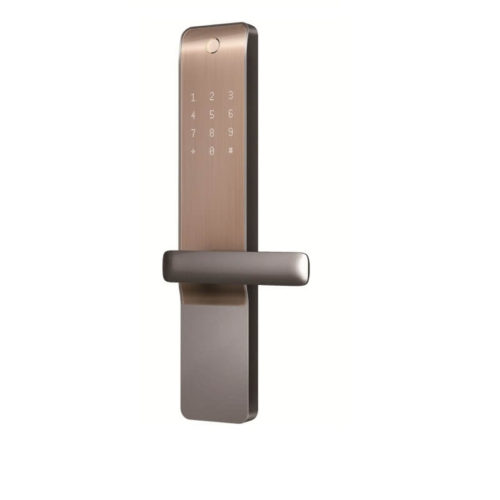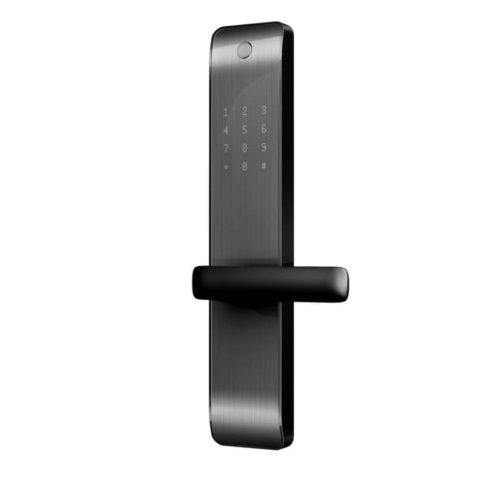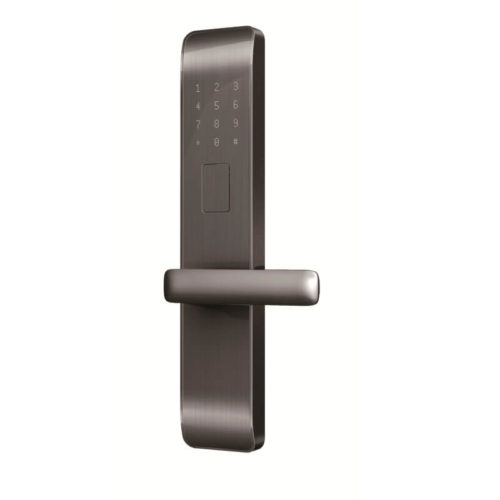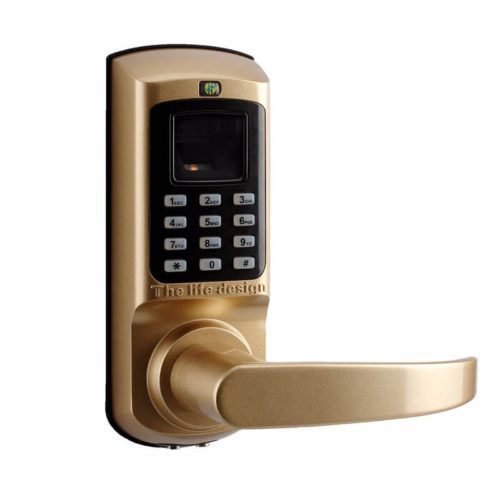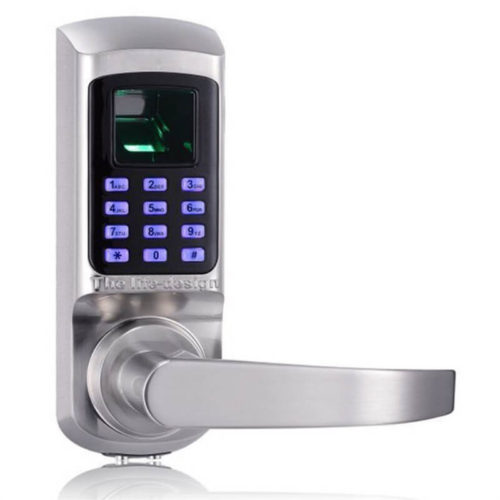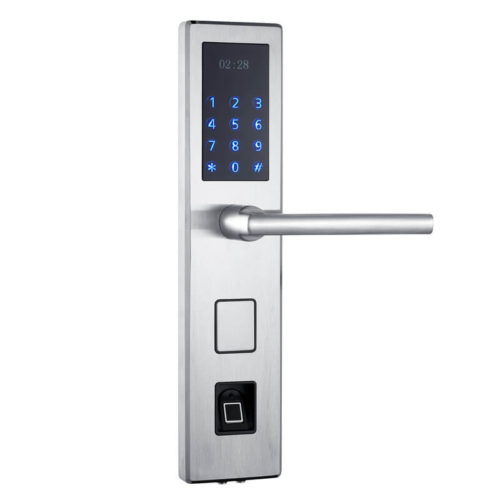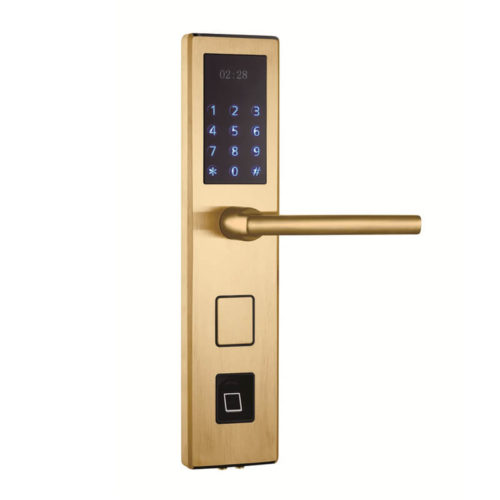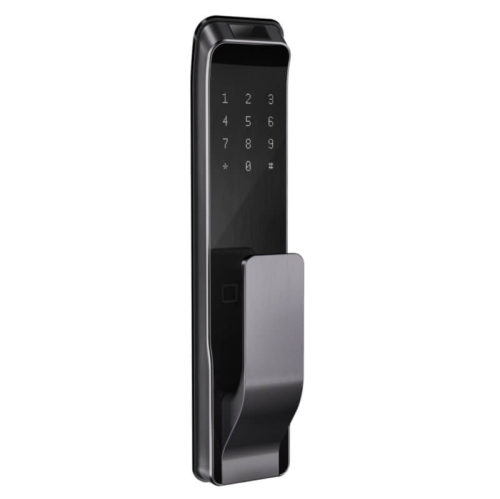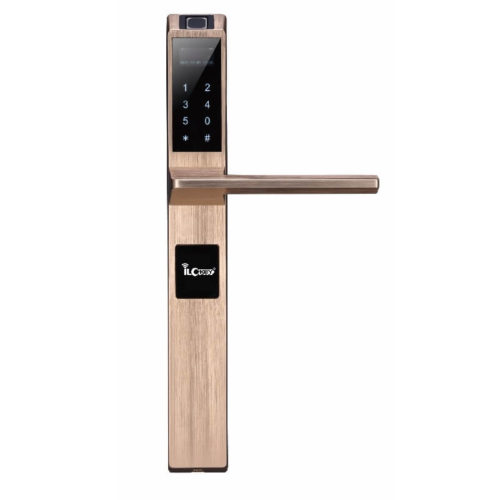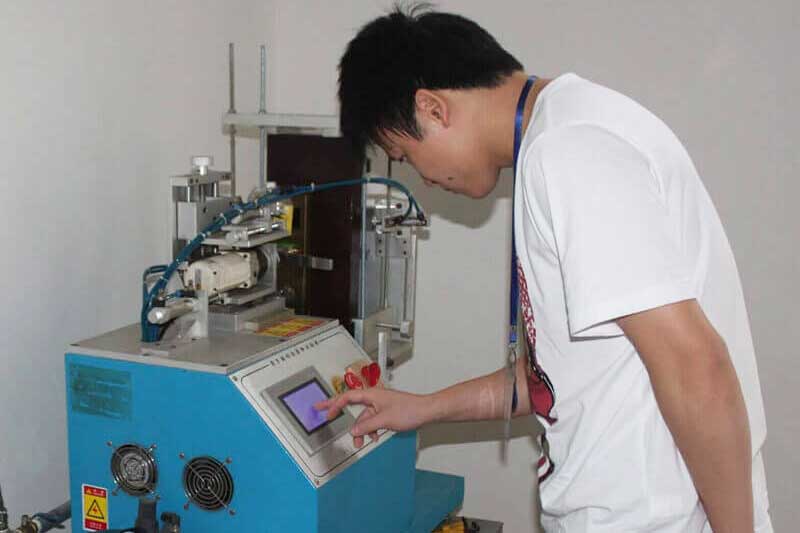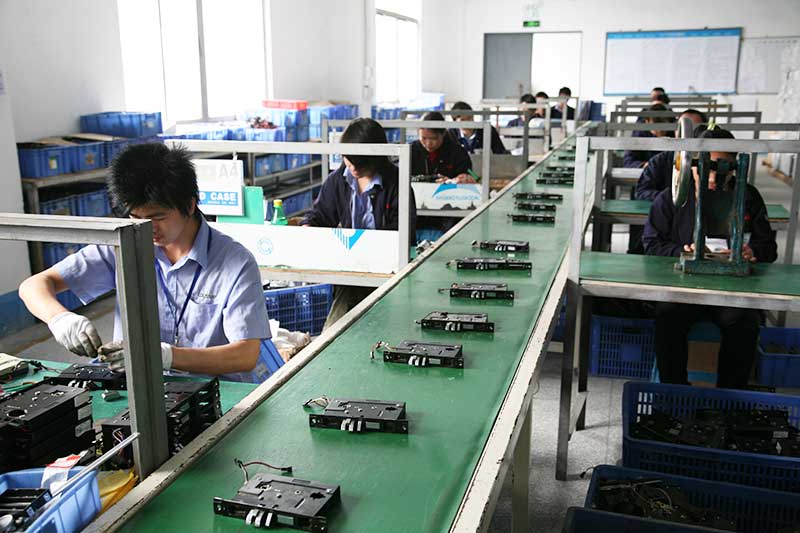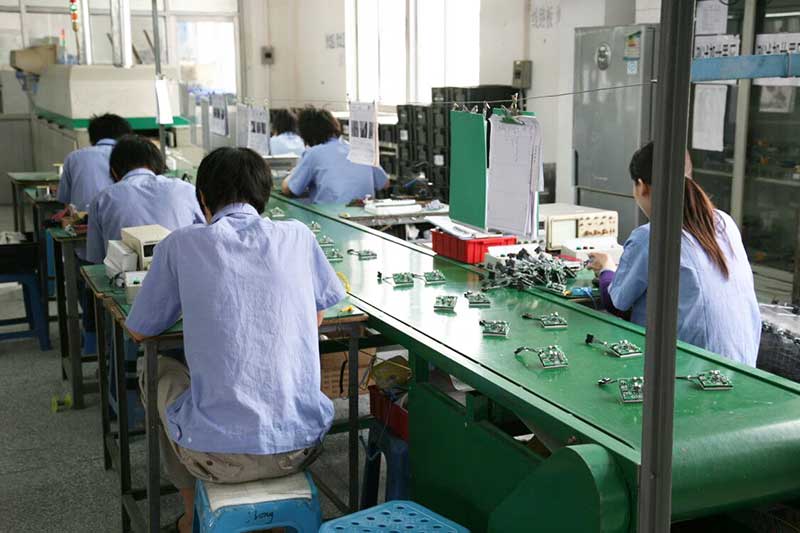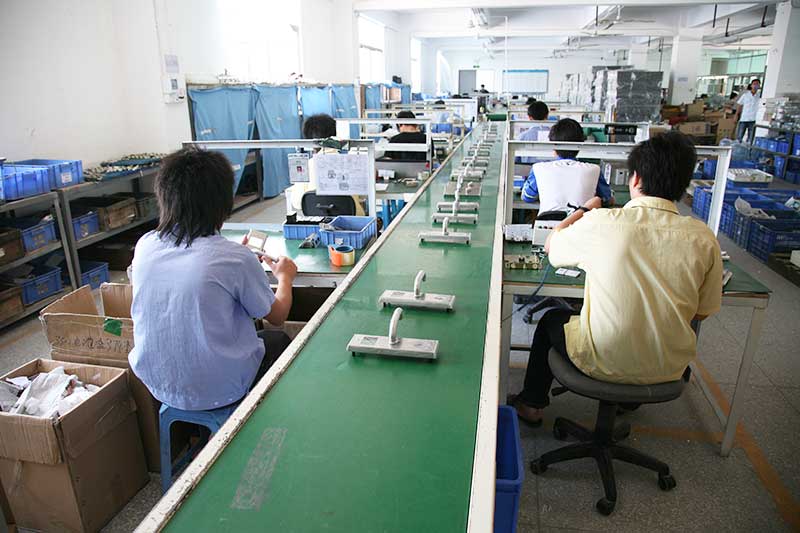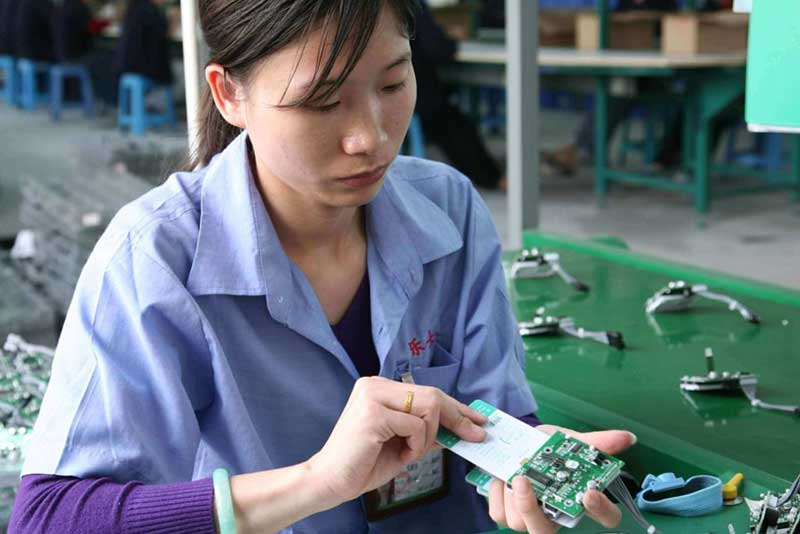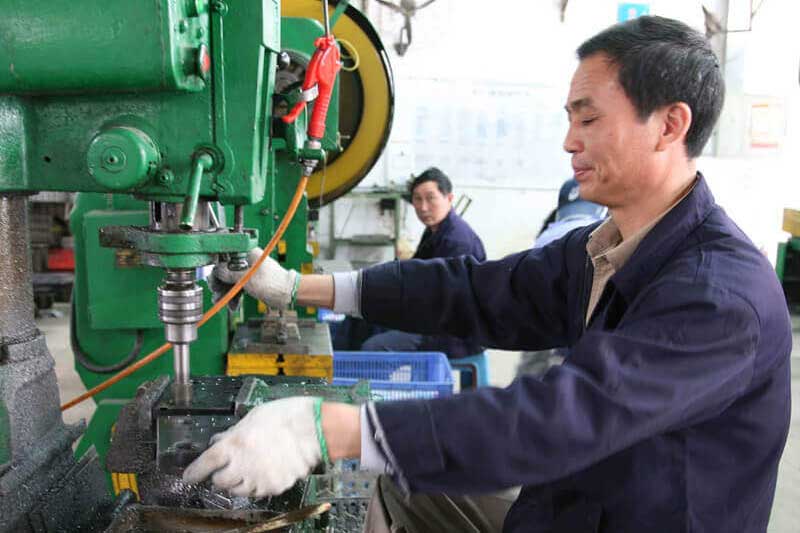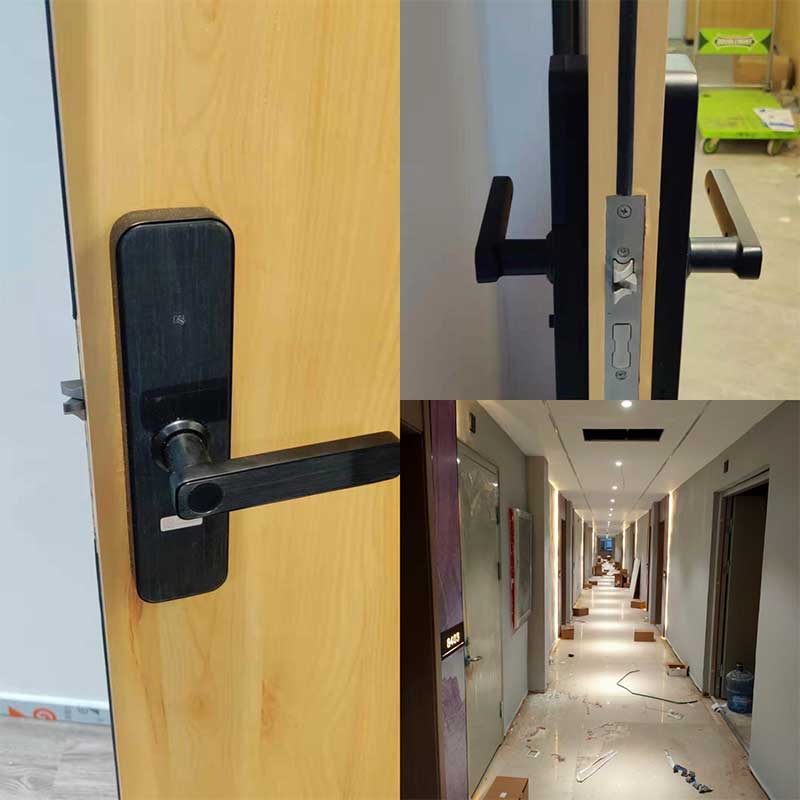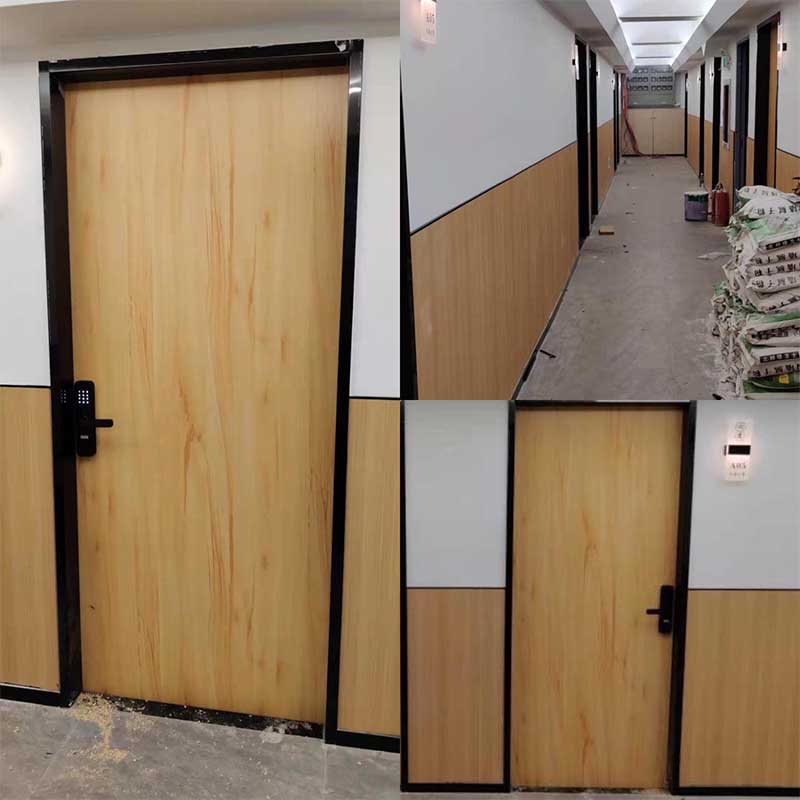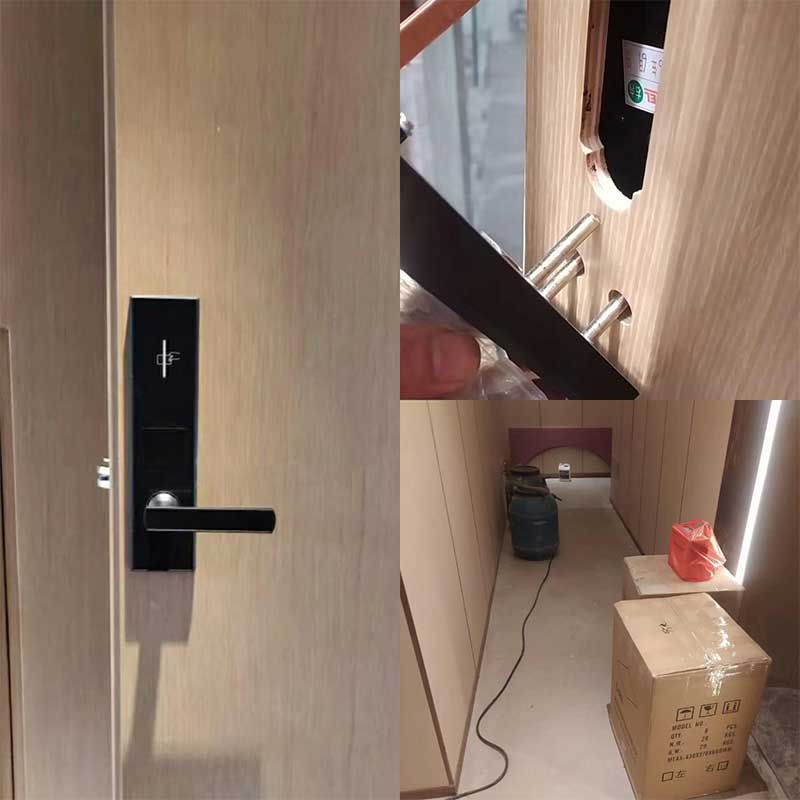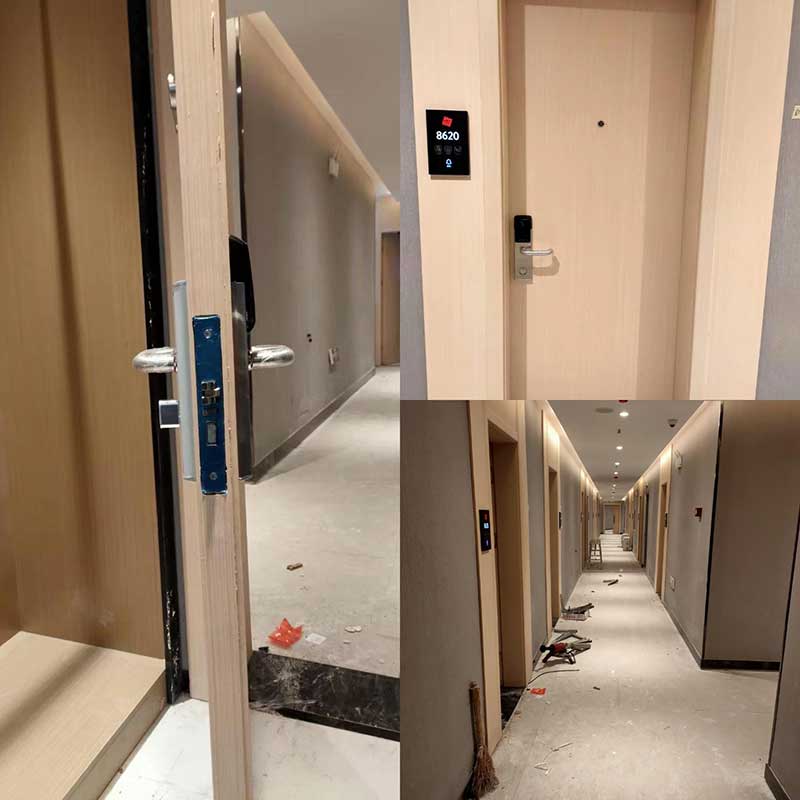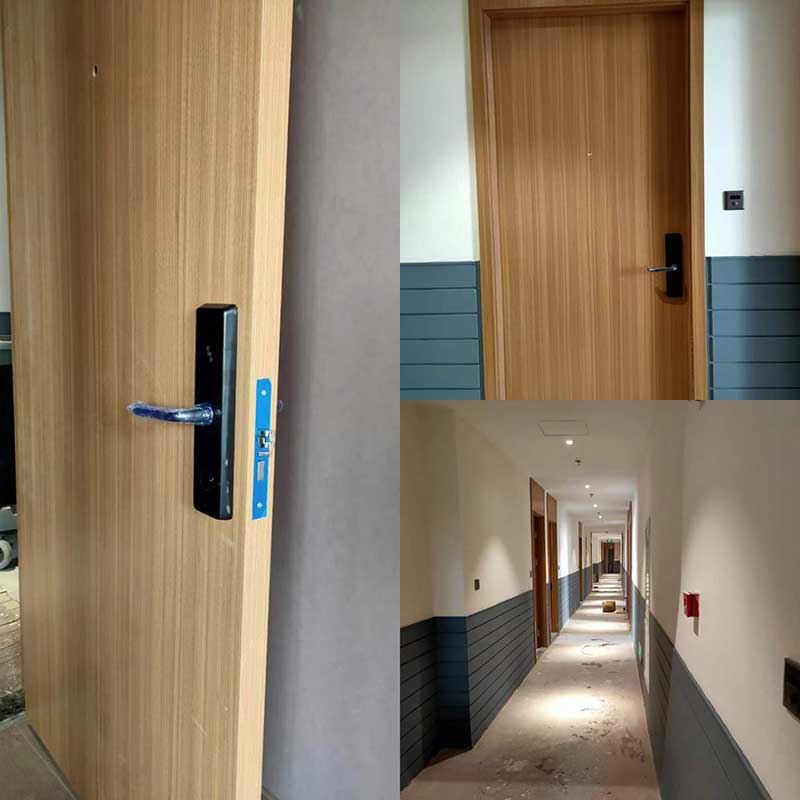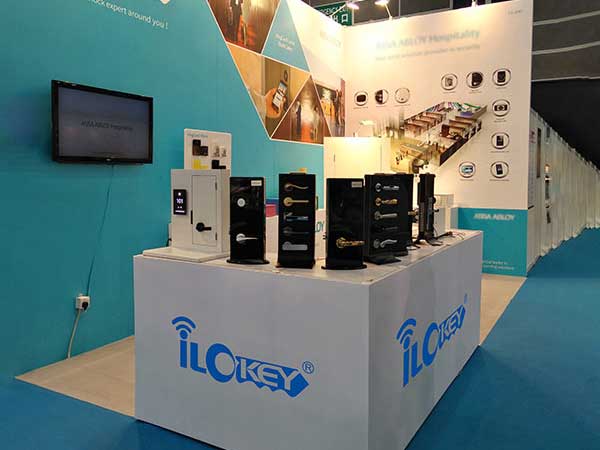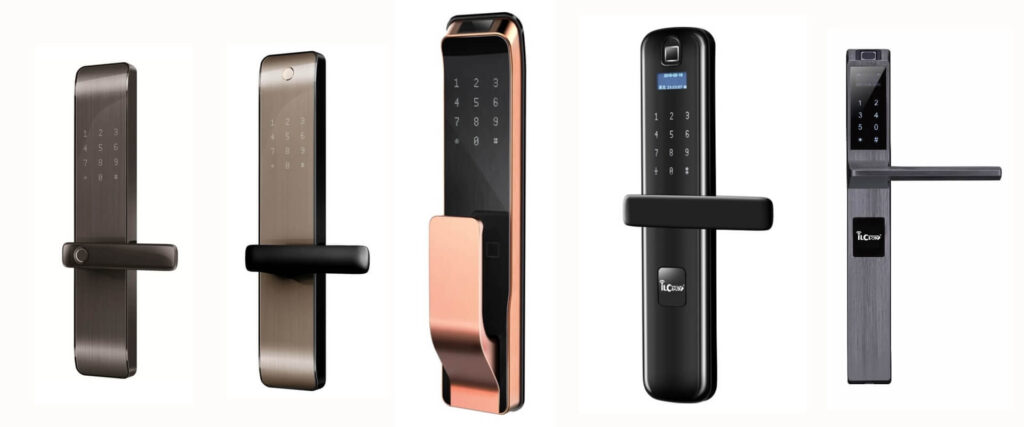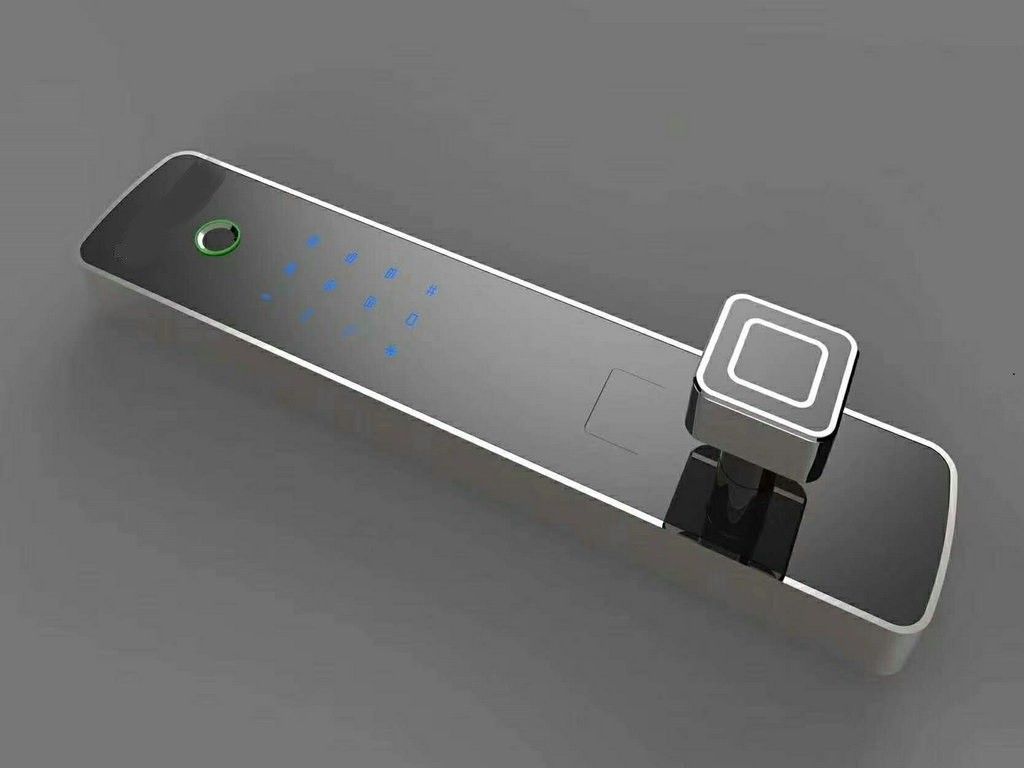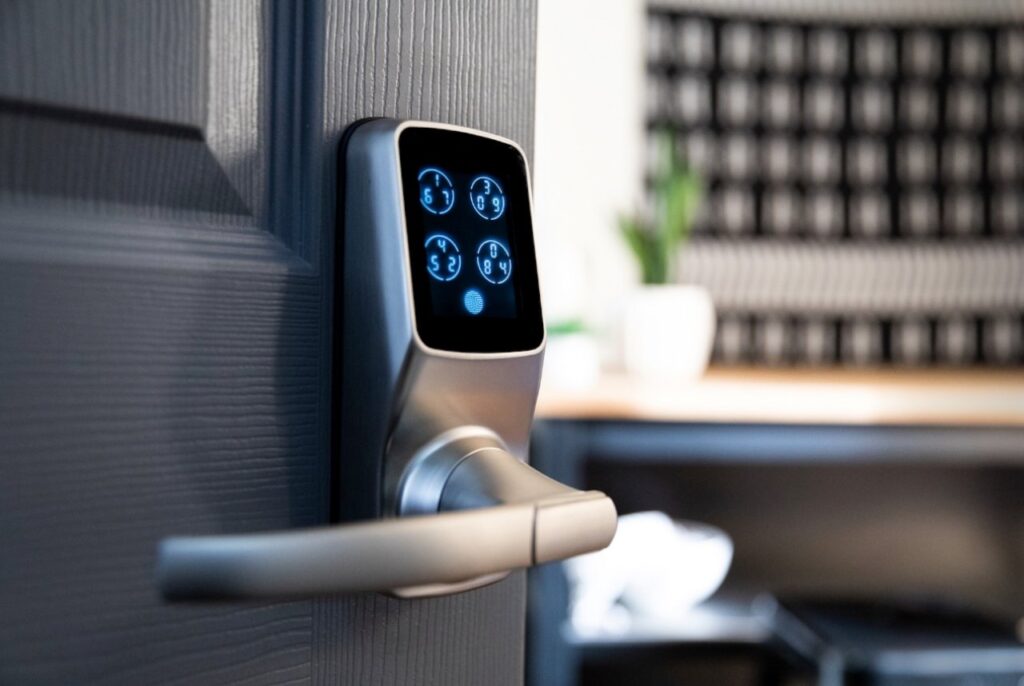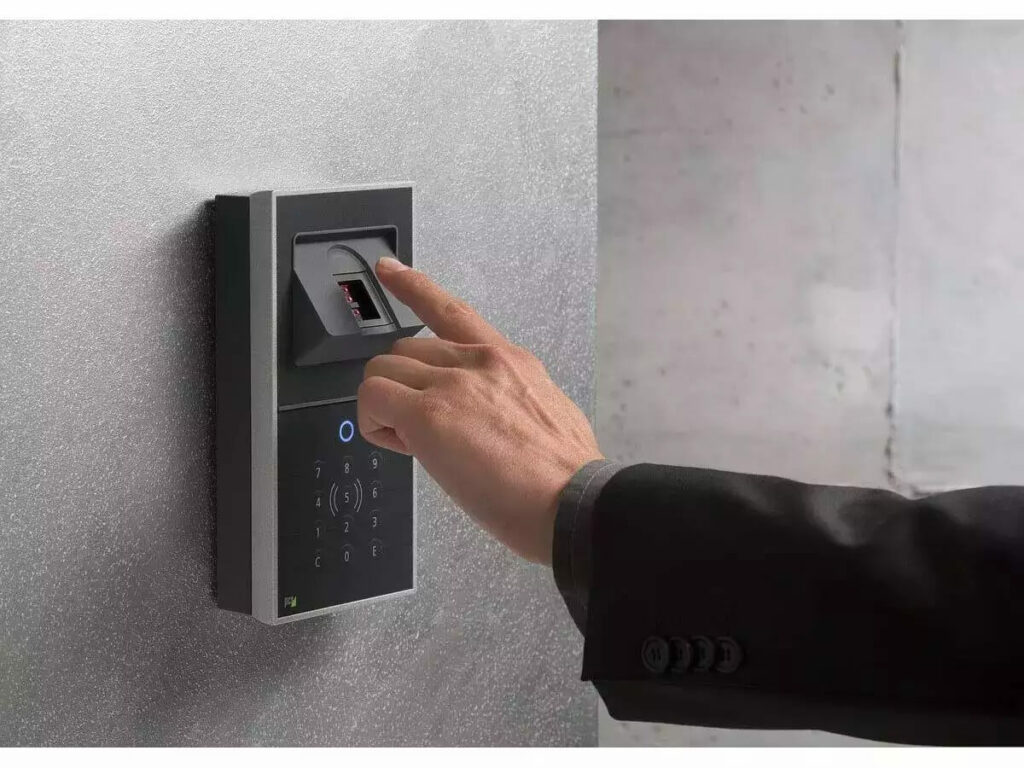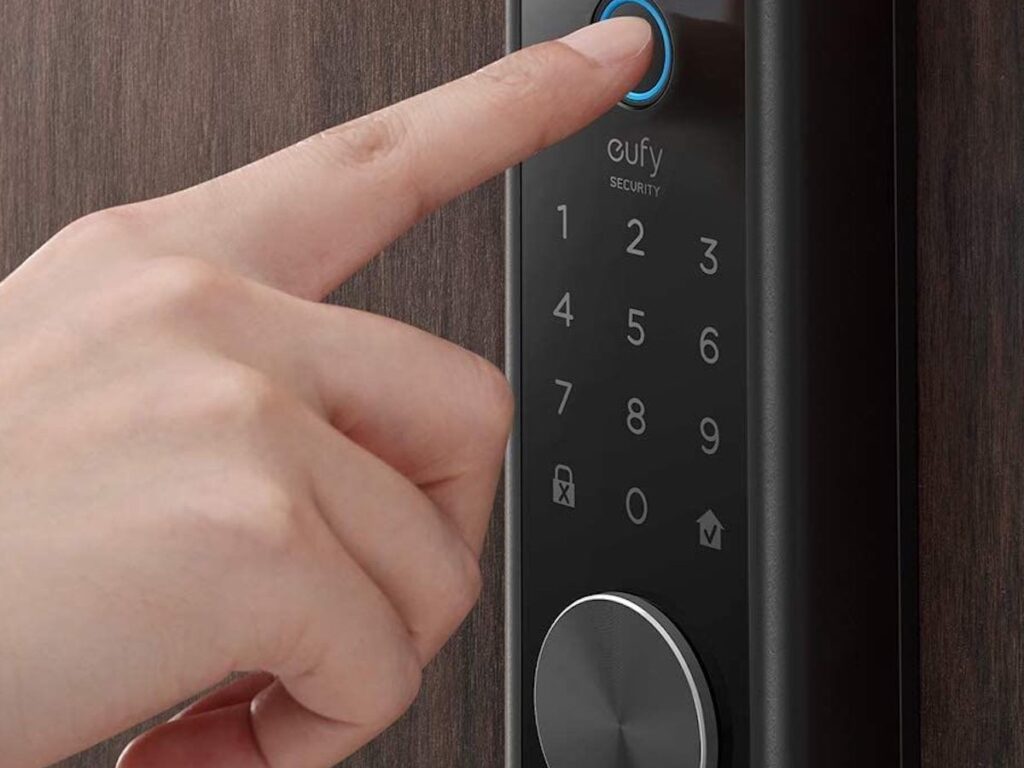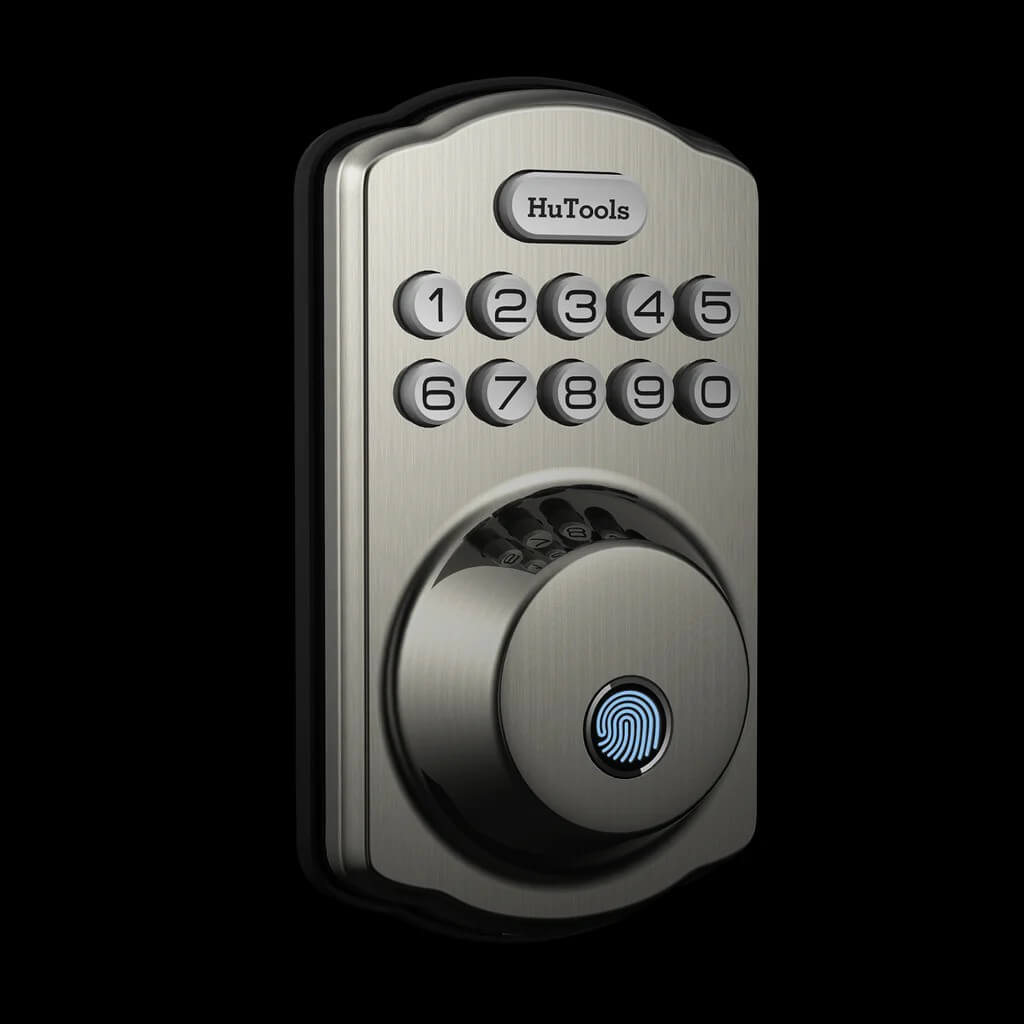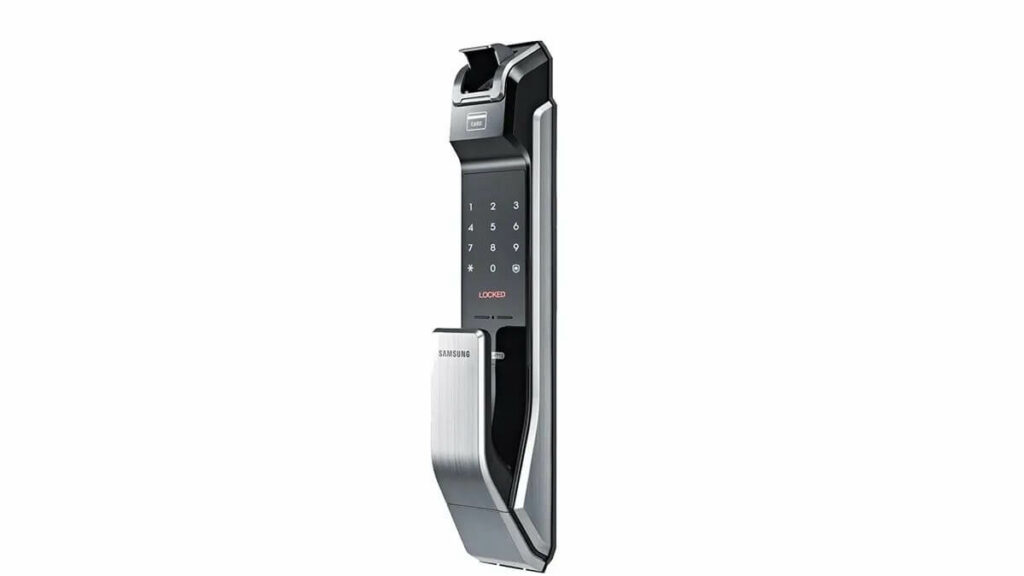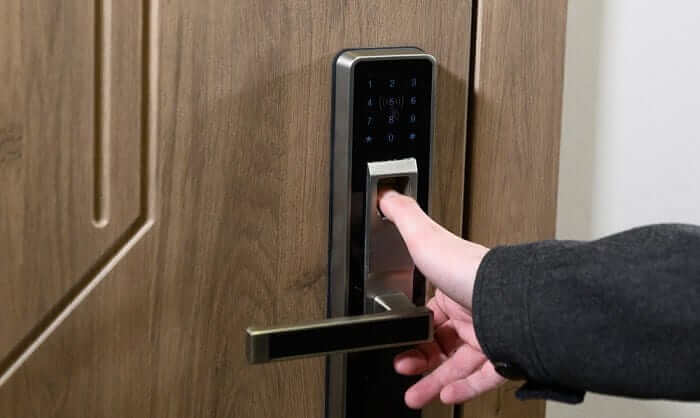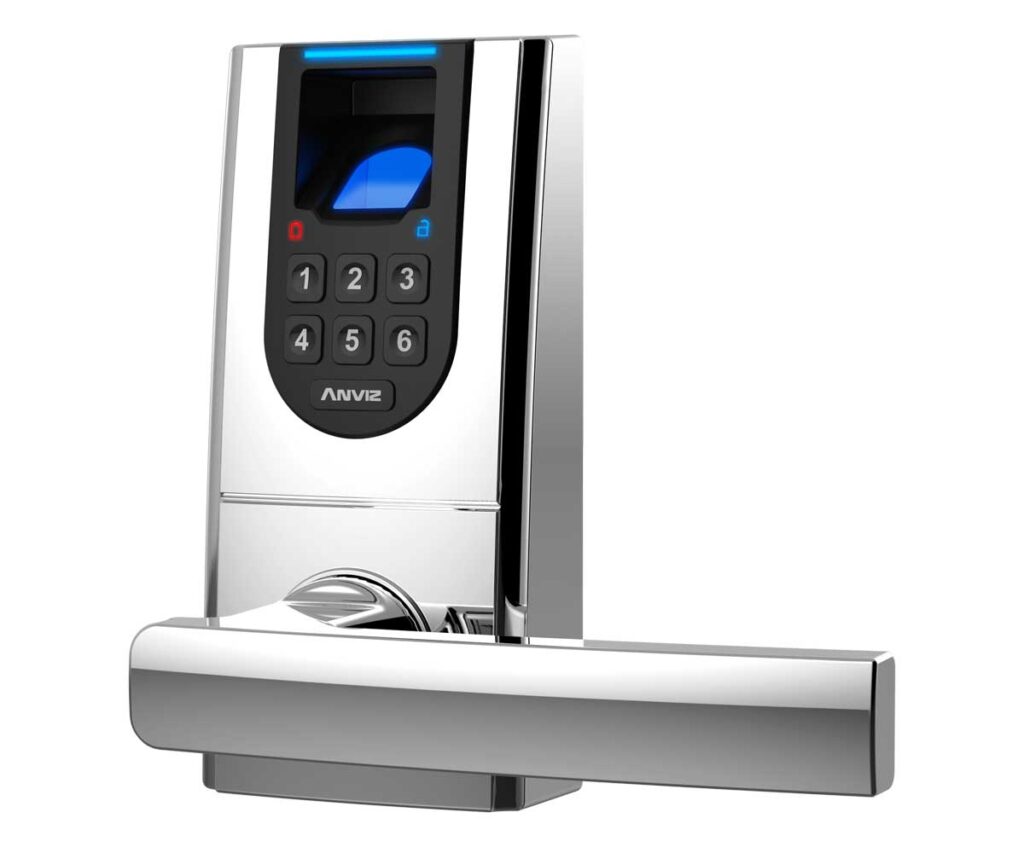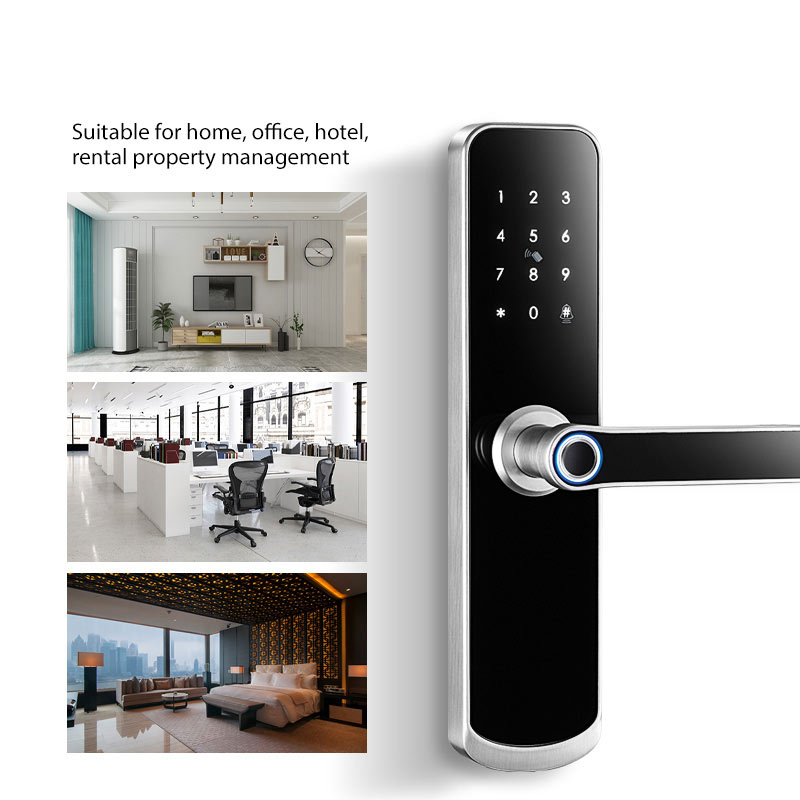
iLockey Fingerprint Door Lock
iLockey Fingerprint door lock has convenience, it can be unlocked by fingerprint, password, cards, and mechanical keys.
Once your fingerprints are registered, you can then use them to unlock the door by placing your finger on the fingerprint sensor again. The system will compare the fingerprint data with the stored records, and if it matches, the door will unlock. At the mean time, the fingerprint door lock has IC card, password or even override key, in case your fingerprint is not recognized for any reason.
Featured Fingerprint Door Lock
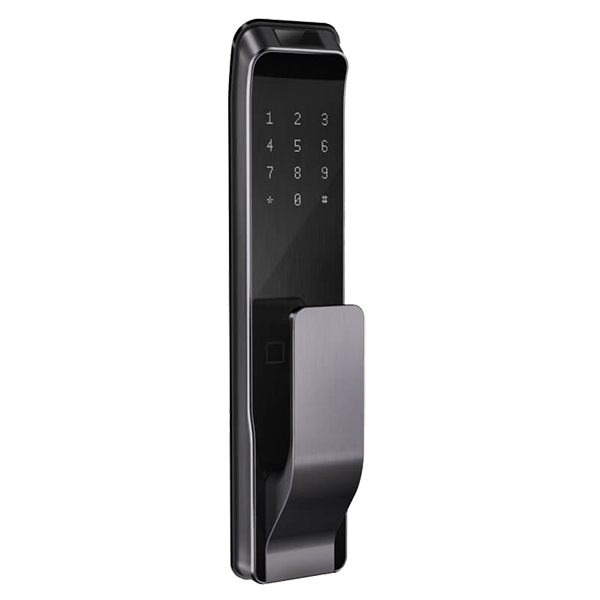
Customize Fingerprint Door Lock
Steps to Customize Fingerprint Door Lock
Initial proposal
We will provide you initial solution proposal according to customer request for the property management.
Samples
After the customer agrees to our initial proposal, we will provide the corresponding samples to the customer for confirming.
Production
After the customers confirm the sample, we will arrange the mass production according to the sample.
QC and testing
All of the fingerprint door lock must be tested the basic functions and also random the aging test.
Package
Packing Fingerprint Door Lock according to customer’s requirement, including color box, label,carton box and pallet.
Features of iLockey Fingerprint Door Lock
Fingerprint Door Locks: A Full Guide
Fingerprint door locks are a great option if you want to upgrade your home’s security and minimize the hassle of keeping keys. In the past, fingerprint door locks were mainly used in government agencies, banks, and places with higher security levels. However, with the development of biosecurity technology, by now they are common and used in many apartment buildings and private homes. You can buy fingerprint door locks anywhere.
This guide will give you a detailed introduction to the definition, advantages and disadvantages, and common problems of fingerprint door locks so that you can better understand fingerprint door locks.
Let’s start with definitions. As the name suggests, fingerprint door locks use your fingerprints to unlock the door. So what is the reason? In effect, fingerprint door locks use biometrics to grant access to a door or gate. It scans the user’s fingerprint and compares it to a previously scanned and saved template that authorizes opening the lock. If the scanned fingerprint matches the saved template, the lock will open, but if the fingerprint does not match, the lock will remain closed.
Since childhood, you’ve probably looked at your fingers countless times and noticed the pattern of ridges and valleys on them. These patterns are an important outcome of human evolution, as they enhance our ability to grasp. However, an unforeseen consequence of this particular step in the evolutionary process was to endow humans with a fantastic method of recognition.
Fingerprint door locks may be better compared to combination door locks because each fingerprint is unique, difficult to forge or change, and lasts throughout a person’s lifetime. Relying on the advanced technology of digital image processing, biometrics, and DSP algorithm, the fingerprint door lock system becomes one of the safest locking systems. And widely used in residential buildings, government buildings, banks, etc.
1) What is biometric security?
Biometric security refers to the use of an individual’s unique physiological characteristics for cryptographic authentication. Hardware components such as cameras or fingerprint readers collect biometric data, which is scanned and compared algorithmically with information held in databases. If the two sets of data match, the identity is verified and access is granted. Every human being is born with certain physical characteristics, and these characteristics do not change over time. Like fingerprints, irises, and faces.
#1. Types of biometric security
Of course, there are different kinds of biometric security, which can be roughly divided into three types.
- Biological: Biological material – such as DNA obtained from blood, saliva, or hair samples, characteristics that can be assessed and cannot be altered by bodily fluid samples.
- Morphology: Physical biometrics measure innate physical characteristics, such as your eyes, fingerprints, or face shape. For example, iPhone biometrics allows you to unlock your iPhone with your fingerprint. During an airport security scan, your passport data is compared with the scanned facial structure.
- Behavioral: A behavioral biometric can be used to capture the unique characteristics displayed in your outward behavior. The most common are speech recognition, signature dynamics (pen movement speed, acceleration, applied pressure, tilt), keystroke dynamics, the way we use objects, gait, footsteps, gestures, etc. If these patterns are tracked, the way you walk, talk, and even type on a keyboard can identify you.
#2. Biometric Security Example
The use of biometric security has grown rapidly across the globe in recent years. Different types of biometric locks have different identification methods, here are some examples of biometric security.
Facial recognition: A facial recognition scanner captures an image of your face and matches it with your authenticated facial biometrics. Using modern biometrics, a unique facial scan is based on details such as eye width, bone structure, nose length, etc. Commonly used in airport security checks and face unlocking of smartphones.
Fingerprint scanning: Fingerprint scanning is to identify and unlock by using different patterns on each person’s fingertips. It is generally used for fingerprint unlocking of smartphones, fingerprint door locks, and public security organs to arrest criminals.
Speech recognition: Speech recognition technology measures the speaking frequency, pitch, and accent of each individual, converts it into an electrical signal, and then cleans it into different speech units to help recognition software identify individuals. Typically used in voice assistants on smartphones.
Iris or retinal recognition: Iris recognition scans the unique pattern in an individual’s iris to identify them, which requires the user to hold their eyes very close to the scanning machine. It is generally used in security systems with higher security levels.
Finger and hand vein recognition: Finger and hand vein scanners use near-infrared light to capture images of blood vessel patterns near the surface of a finger or handprint. In addition, blood flow also helps to detect falsified data entries. Unlike fingerprint scanners, fingerprint scanners can be fooled by copied fingerprints. Finger and hand vein recognition cannot be replicated because it is very difficult.
Is a fingerprint door lock safe to use? Most answers are yes. Like any other standard smart lock, the fingerprint lock can provide increased security for your home, office, and some other applications.
After investigation and research, the working principle of the fingerprint lock is to scan the fingerprint data and convert it into a digital template. When you hold your fingerprint against the sensor, the system in the lock matches a digital template of your fingerprint with pre-saved data. If the match is successful, the door lock will be unlocked.
On the other hand, if someone else tries to break in, no entry is allowed and the door remains locked. Although the entire process takes only a fraction of a second, we can break it down into parts. The following is a detailed introduction to the entire workflow of the fingerprint door lock.
1) Fingerprint scanning
When someone puts a fingerprint on the lock for the first time, the lock scans and produces a gray image with darker lines being ridges and brighter areas being valleys. The image pixel value represents the intensity of each pixel and may range from 0 to 255. The number 0 represents black and the number 255 represents white.
2) Fingerprint image binarization
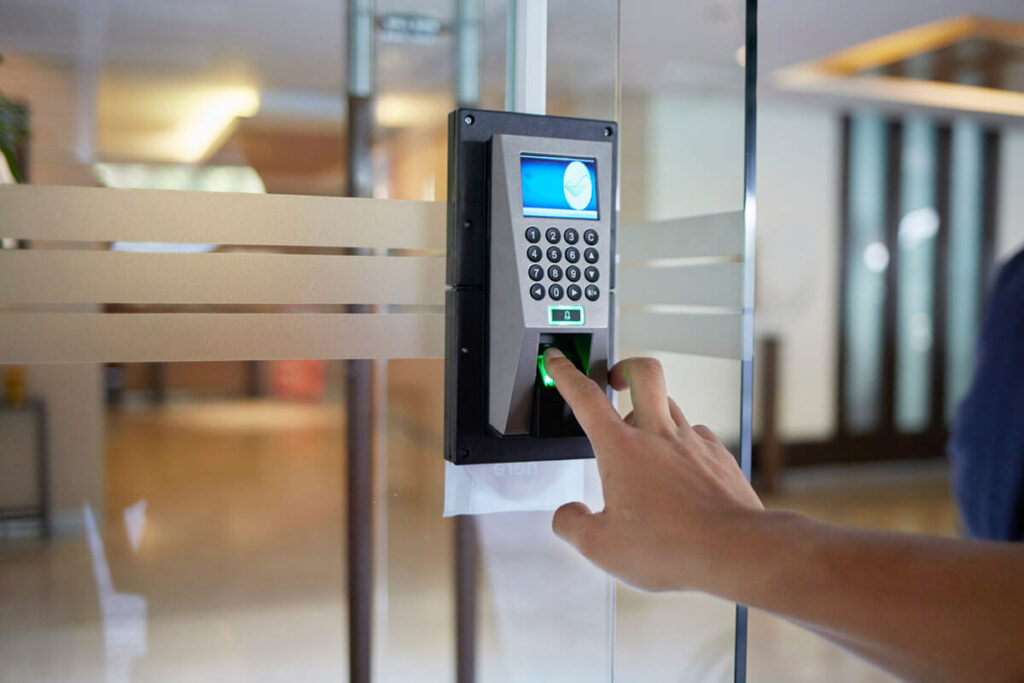
3) Filter the fingerprint image
The third step is to filter the fingerprint image. After binarization, the fingerprint image is thinned. In a binarized image, the ridges are wide, and they are filtered down to a single pixel size. Thinning does not change the location or orientation of minutiae points, but it helps to identify fingerprint features more effectively.
4) Minutia point extraction
5) Details matching
If you are the homeowner, to set up the locks, you will need to have each tenant and staff member swipe their fingerprints on the lock so that their fingerprints are on file. That way, the lock can save their print and recognize it when it’s time to open the door. Additionally, many fingerprint locks are paired with mobile apps or software that allow you to monitor building usage. You can also grant and revoke access, as well as track who enters and exits the building.
The most common fingerprint smart door configuration is a standard door lock with a handle. The fingerprint smart lock is composed of components such as the lock cylinder part, the handle, and the lock panel. The cooperation between these components makes the smart lock more intelligent. The following is an introduction to the composition of the fingerprint door lock.
1) Control panel
The control panel refers to the front and rear panels of the fingerprint lock and is the decisive factor in determining whether a buyer likes this lock or not. Because appearance is the most obvious. Metal alloys, stainless steel, aluminum alloys, plastic, and zinc alloys are the most common materials used for smart lock panels. At present, the mainstream panels are made of zinc alloy and stainless steel, which have good corrosion resistance and high hardness.
2) Lock the body
The lock body is mainly divided into two types: standard lock body and non-standard lock body. The main material is stainless steel, but a small part is also iron.
3) Circuit board
The circuit board is the core of the smart lock, which is equivalent to the human heart. It controls the life and performance of the fingerprint door lock.
4) Motor
The motor is the motor that provides power for the fingerprint lock, just like the driver software of the computer. The motor is the connecting device between electronics and machinery, and the center of power conversion. It is equivalent to a bridge and plays an important role in linking the past and the future. When you use your fingerprint to unlock, you will hear the sound of the motor turning once. If the motor stops turning, the lock will automatically open and cannot be locked.
5) Handle
The design of the handle is convenient for people to open the door, and the smart door lock is divided into push-down type and push-pull type. After the fingerprint of the push-down door lock is verified, the lock cylinder of the smart door lock will release the lock tongue through the device, so that the lock tongue is directly connected to the push-down handle of the door lock.
When you press the handle, the lock tongue can be fully retracted. Get up. However, the push-pull door lock does not have the step of pressing down. The lock tongue of the door lock is directly controlled by the internal motor. After passing the verification, the lock tongue will be directly inserted into the interior. You can choose different fingerprint lock handles according to different needs.
6) Keyboard
Ordinary fingerprint door locks are also equipped with a password verification method. The keyboard of a fingerprint lock usually uses the reflection of light to judge the input, but not all smart locks are equipped with a password keypad.
7) Fingerprint sensor
The fingerprint sensor of the fingerprint lock is mainly divided into two types: optical fingerprint head and semiconductor fingerprint head. Optical fingerprint identification is to identify fingerprints through mirror refraction, which has the advantages of durability, easy cleaning, good stability, and low cost. Semiconductor fingerprint recognition is electrical recognition through living skin, and its recognition rate and security are higher than optical fingerprint recognition.
8) Lock the cylinder
The lock cylinder is an important factor in determining the price of a smart lock because different levels of lock cylinders have different security levels. The lock cylinder is divided into three grades: A, B, and C.
9) Battery slot
The battery slot is used to store batteries. The current mainstream fingerprint door locks battery slots are 4 batteries, 6 batteries, and 8 batteries.
10) Anti-lock knob
The anti-lock knob is to prevent it from being opened by bad guys, adding a security line to the house. Basically, all home smart locks will be configured.
11) Slider
The fingerprint door lock with a sliding cover can effectively protect the key unlocking part. Of course, there are also fingerprint door locks without a sliding cover, which should be selected according to the needs of different occasions.
12) Bluetooth module
This is the IoT part of the smart lock. Some fingerprint door locks can be opened remotely by connecting to Bluetooth and wireless networks.
13) Camera
In order to make smart fingerprint locks more secure, many fingerprint locks are now equipped with cameras. The function of unlocking and taking photos can be pushed to your mobile phone, and there is even an anti-staying and snapping function.
The reason why fingerprint door locks are becoming more and more popular today is that it has many advantages. The following will introduce you to some advantages of fingerprint door locks.
1) Security
There is no doubt that the biggest advantage of fingerprint door locks is their unparalleled security because security has become the most concerned issue for people at present. Physical keys are easy to be stolen or lost, or even copied, but fingerprint door locks solve your problem, copying someone’s fingerprint is not so easy. Also, normal keys may be lost, but fingerprints are not.
2) Keyless entry
Do you often have the trouble of forgetting your keys and being unable to enter the house? The experience will be shared by everyone, I believe. With a fingerprint door lock, you only need one finger to open your door, and scanning your fingerprint as a credential is faster than using a traditional key or entering a password. It’s convenient, isn’t it?
3) Control who enters your home
In fact, the fingerprint door lock can not only save the fingerprint of one person, but it can also save the fingerprints of multiple people at the same time. So you can grant access to your whole family and friends as needed. It’s a breeze because you don’t have to open the door when they tell you, they can unlock the door themselves. In the office too, you can let your employees come and go as they please.
4) More economical than other biometric locks
Locks that use other biometric credentials like iris scanners or voice authentication will be more expensive than locks that use fingerprints. And fingerprint door locks are less likely to break or malfunction, which means you don’t need to spend more money on keys.
5) Compatibility
Fingerprint recognition technology is compatible with a variety of other smart home devices and systems and can be seamlessly integrated into your smart home ecosystem. Many smart door locks with fingerprint recognition technology are compatible with popular smart home platforms such as Alexa, Google Assistant, Apple HomeKit, and more. With a smart door lock, you can control your smart home devices with voice commands or via a centralized app.
Like any other product, the fingerprint door lock is not perfect and it has some drawbacks.
1) Your fingerprint may not be recognized
In some special cases, your fingerprint may not be recognized by the scanner. Examples include calluses, scars, or other abrasions on your fingertips.
2) May not work during power outages
Since the fingerprint-scanning door lock requires electricity to operate, a power outage could render it completely unusable. Of course, you can also use batteries for power supply, but you need to find the corresponding battery model.
3) Not contactless
Because fingerprint door locks have to touch the panel, this may not be ideal for residents in large, high-traffic multifamily buildings, especially during flu season, which could spread germs.
4) Everyone’s fingerprints must be scanned
For users of large buildings, fingerprint door locks are not ideal, because you need to enter everyone’s fingerprints, which means a more lengthy and complicated process.
5) Difficult to replace
Fingerprint credentials are harder to reset than passwords, and in some cases, you may need to replace the lock entirely if someone breaks into your home.
Here are some fingerprint door lock recommendations.
1) HuToolsKS02 ORB Fingerprint Door Lock
If you’re looking for an affordable fingerprint door lock, HuTools’ KS02 ORB Fingerprint Door Lock is a great choice. You can rest assured that its low price doesn’t stop it from being a good fingerprint door lock. A good example is its ability to be used as a fingerprint bedroom door lock. It provides 20 sets of fingerprints, allowing me to grant access to everyone I need.
In addition, just put your finger on the fingerprint for a split second, and the door will open. Second, password activation is a breeze. It is equipped with an easy-to-use 10-digit keypad for comfortable use. You can even choose the length of the code according to your needs, anywhere from 4 to 10 digits is fine.
advantage:
- One of the more affordable options
- Quick Fingerprint Activation
- Emergency power supply capacity
- Can store 20 sets of fingerprints
- Easy-to-use 10-digit numeric keypad
But its downside is that there are no built-in apps.
2) Smonet smart lock
The biggest advantage of the Smonet smart lock is that it can store 250 fingerprints, which is amazing, right? But its price will be more expensive than other fingerprint door locks, if your budget is not too much, we suggest you consider other door locks.
Advantage:
- Up to 250 fingerprints can be registered
- Easy to install
- Long battery life
- Convenient auto-lock feature
- Integrate with Google and Alexa voice assistants
Shortcoming:
- More expensive
- Smart hub connections are not supported
3) Megafeis FB50 Fingerprint Smart Padlock
The exterior of the Megafeis FB50 Fingerprint Smart Lock is made of stainless steel, so it provides sufficient tamper resistance when used to lock fences, exterior doors, and cabinets. And this lock is so small that you can even carry it with you. In addition, the Megafeis FB50 fingerprint smart padlock is also equipped with a USB rechargeable lithium battery and can be used for 2 months once fully charged. This saves you the expense of buying batteries.
- Valid fingerprint scan
- User-friendly USB rechargeable lithium battery
- Lightweight and portable padlock design
- Durable stainless steel construction with tamper-resistant features
- Sub-par built-in apps
4) Samsung fingerprint digital door lock
Samsung fingerprint digital door lock is a product of Samsung, which, like other fingerprint smart locks, can be unlocked by touching. One of the most important is that it has the function of detecting the occurrence of fire. Because it is equipped with a fire detection sensor inside, when the built-in sensor detects abnormally high temperatures, it will trigger an alarm, and the door lock will flash to remind the user. Door locks also unlock automatically for a quick escape.
Advantage:
- Fire detection sensor
- Easy Auto Lock
- exquisite design
- Anti-tamper technology
Shortcoming:
- The price is $399.00
5) CIVIGEM Biometric Keyless Entry Door Lock
The last one recommended for you is CIVIGEM Biometric Keyless Entry Door Lock, its most striking feature is that it supports multiple ways to unlock, including fingerprint scanning, password, Bluetooth mobile app, RFID, voice control, or mechanical key. With these methods, you don’t have to worry about being unable to enter the house because you forgot your keys or your phone is out of battery.
Additionally, the lock also provides temporary access codes, which I think would be a beneficial feature for Airbnb users or renters. However, despite all these advantages, CIVIGEM also has a disadvantage, which is that there is no lock button on the door lock keypad. This requires you to wait for it to automatically lock or manually lock it on your smartphone, which is inconvenient for some people in a hurry.
- Seiko-made zinc alloy lock plate
- Provide a temporary access code
- Six unlocking methods (fingerprint, password, APP, voice control, key, RFID)
- There is no lock button on the keyboard
Here’s what you need to consider when you’re considering choosing and installing a fingerprint smart lock on your home’s gate or gate.
1) Price
We all know that price is the first factor we consider when buying something, and while some price differences depend on the manufacturer and product quality, many price differences are also related to the features you choose. Smart locks range in price from about $100 for a basic keypad to nearly $600 for a keyless door lock, depending on your budget and needs.
2) Check False Accept Rate (FAR) and False Rejection Rate (FRR) scores
Ratings for biometric systems are based on their FARs and FRRs. FAR stands for False Accept Rate, while FRR stands for False Rejection Rate. It is very important to check both aspects before purchasing any smart lock. An FRR below 1% is ideal, while a FAR should not be higher than 0.0001%. Therefore, you’ll look for fingerprint door locks with the lowest FAR and FRR scores, which will indicate their accuracy and performance.
3) Do you need other functions
Today, some fingerprint smart door locks do not just unlock, they also have other functions, such as cameras and remote monitoring. If you travel a lot, then you need a camera to monitor your home. Of course, you can choose whether you need a multifunctional fingerprint smart door lock according to your actual needs. But you have to take care that they should be useful for your purpose. Otherwise, you’ll end up spending a lot of money on a gadget that doesn’t perform to its full potential.
4) Alarm system
We recommend that you buy a door lock with an alarm function, which can not only trigger the alarm when a stranger tries to open your door lock but also an alarm when it detects that there may be a fire. This adds a layer of security to your safety.
5) Automatically lock and unlock
Buy a smart lock with an automatic locking and unlocking feature that allows you to unlock the smart lock when you approach the door and lock it for a specific amount of time after you leave.
Here are answers to frequently asked questions about fingerprint door locks.
1) How to install a fingerprint door lock?
Nowadays, many people buy fingerprint door locks online, and they will not be installed when they receive the product, or they need to purchase additional installation services. Different models of fingerprint door locks have different installation methods but don’t worry, the general fingerprint door locks come with useful and detailed installation and use manuals.
These resources can guide you through the process on your own. It is worth noting that before buying, you must send a picture of the anti-theft door to the fingerprint lock manufacturer to see if it is suitable, the thickness of the door, and whether there is a sky and earth hook. These data inform customer service.
2) How to add or delete fingerprints?
The operation method of deleting the unlock information is the same as that of entering the unlock information. Select the ID to be deleted, press the “#” key to confirm, select delete the fingerprint or password user, and complete the operation according to the voice prompt.
3) What happens when biometrics are locked?
If your biometric fingerprint door lock is locked, it will function like any other lock. It will help keep people out of your home until someone unlocks it with the correct fingerprint or other identifiable attribute.
After reading this, do you have a better understanding of fingerprint door locks? I believe that after reading this article, your mind will not be blank when it comes to choosing fingerprint door locks. If you are interested in other aspects of fingerprint door locks, please feel free to contact us.


